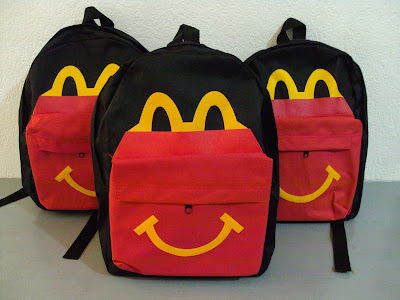EcoWaste Coalition Warns Against Back-to-School Supplies Laced with Cadmium and Lead

An environmental and children’s health advocacy group has again alerted consumers against purchasing school supplies laced with hazardous substances such as cadmium and lead.
The EcoWaste Coalition emphasized the importance of picking back-to-school essentials that are not only affordable but also non-toxic to avoid children’s potential exposure to health-damaging chemicals.
At the same time, the group urged manufacturers, importers, distributors and retailers of school supplies, as well as government regulators, to ensure that school supplies sold in the market are 100% safe for children to use and are properly labeled.
“While many school supplies are generally harmless, there are some items that contain undisclosed chemicals that are banned or restricted in children’s toys because of their harmful effects on children’s health and the environment, too,” stated Thony Dizon, Chemical Safety Campaigner, EcoWaste Coalition.
“Parents should be on the lookout for these items that may contain hazardous chemicals such as cadmium, lead and phthalates,” he pointed out.
“Our schools and the products that children use should be totally safe from these chemicals that can put their development and health at risk,” he concluded.
To promote chemical safety awareness, the EcoWaste Coalition randomly bought assorted products, many of them with zero labeling information, from street vendors and retail stores located in Divisoria and Quiapo, Manila City and in Makati, Pasay and Quezon Cities.
The purchased items, which include art materials, bags, water containers, rain gears and assorted school accessories, including hair clips for girls, were subsequently screened for heavy metals using a handheld X-Ray Fluorescence (XRF) device.
Included among the products bought and analyzed were Artex Fine Water Colors, MPC Classique Water Colors and Fairyland Crayons, which the Food and Drug Administration (FDA) banned in 2014, 2017 and 2018, respectively, for containing lead above the maximum allowed limit.
Out of 87 samples, 34 were found to contain lead and/or cadmium above levels of concern.
Lead was detected in 32 samples in the scale of 172 to 86,000 parts per million (ppm), way in excess of the regulatory limit of 90 ppm.
Lead, a hazardous substance linked to learning and behavioral problems, is prohibited in the production of school supplies as per DENR Administrative Order 2013-24, or the “Chemical Control Order for Lead and Lead Compounds,” which the group pushed to prevent and control childhood lead exposure.
Among the samples found to contain high concentrations of lead were:
1. An Artex Fine Water Colors (bright yellow cake), 86,000 ppm
2. A yellow painted metal water container with Minions design, 65,500 ppm
3. A red coated hair clip, 42,600 ppm
4. A yellow painted metal water container with Rabbit design, 39,300 ppm
5. A yellow coated hair clip, 15,800 ppm
6. A backpack with Ultraman design, 12,100 ppm
7. An MPC Classique Water Colors (light yellow cake), 4,914 ppm
8. A bag tag with a Doraemon design, 3,659 ppm
9. A yellow Fairyland crayon, 3,191 ppm
10. A bag tag with Superman design, 2,361 ppm
11. A backpack with Ben 10 design, 1,908
12. A backpack with Hello Kitty design, 1,879 ppm
Cadmium from 256 to 1,838 ppm was likewise detected in 12 samples. A raincoat with Pokemon design had 666 ppm and a backpack with Sofia design had 1,838 ppm,
For children's health and safety, the EcoWaste Coalition urged parents to shun school supplies that are painted unless certified as lead-safe, those made of polyvinyl chloride (PVC) plastic as these may contain toxic additives, and those that are already banned by the FDA.
The World Health Organization (WHO) has tagged lead and cadmium in the list of “ten chemicals of major public health concern.”
As stated by WHO, lead “is a cumulative toxicant that affects multiple body systems, including the neurologic, hematologic, gastrointestinal, cardiovascular, and renal systems.” The WHO also warned “children are particularly vulnerable to the neurotoxic effects of lead, and even relatively low levels of exposure can cause serious and in some cases irreversible neurological damage.”
Cadmium is classified by the International Agency for Research on Cancer as “carcinogenic to humans,” and is also recognized as a reproductive and developmental toxin associated with reduced birth weight, premature birth, stillbirth, spontaneous abortion and birth defects in humans, as well with behavioral and learning disabilities.
-end-
Reference:
http://www.denr.gov.ph/section-policies/viewrec.php?id=4693&main=1
https://ww2.fda.gov.ph/index.php/advisories-2/cosmetic-2/484610-fda-advisory-no-2018-008
http://www.fda.gov.ph/advisories-2/cosmetic-2/466281-fda-advisory-2017-272
http://ro10.doh.gov.ph/files/health_facility/FDA/FDA_Advisory_No._2014-044.pdf
http://www.who.int/ipcs/features/10chemicals_en.pdf?ua=1
http://www.who.int/mediacentre/factsheets/fs379/en/






Comments